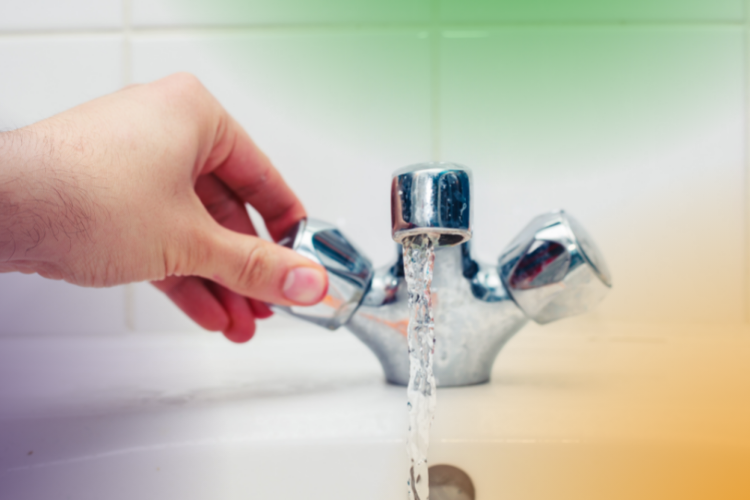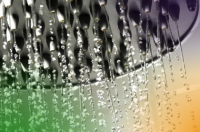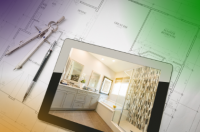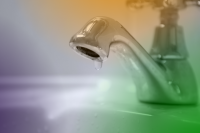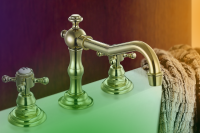Water Meter Woes?
We’re all more environmentally conscious these days, whether that means switching to an electric car to cut down on omissions, or reusing your plastic bags when you go to the supermarket. Water-saving measures are often seen as tricky or expensive to implement, but if you’re one of the thousands of UK households who are using a water meter, then could these clever money-saving tips save you a bit of money too?
Water meters tend to focus the mind when it comes to water use in the home. Although the price per litre used might be low, the average household gets through so much water over the course of the year that making small changes can make a noticeable difference to your bills. There’s also a misconception that here in the UK we have plenty of water – we’re an island, surrounded by water, and it’s always raining, right? Although that may be true in parts of the UK, climate measurements show that the south-east of England, including London, actually gets less in the way of annual rainfall than Sydney and Istanbul.
Water scarcity is a growing problem, with water companies raising the prospect of water shortages becoming commonplace in British summers in year to come. Climate change appears to be delivering us wetter winters but hotter, drier summers, giving water companies huge headaches over the fluctuating supply and keeping up with demand in warmer months. We can all do our bit by being conscious of how much water we are using in our homes, and taking steps to reduce consumption where possible.
Bathroom usage accounts for around 50% of the water used in the average house. Showers and baths account for around 30% of our total water use, and almost a quarter is used in flushing toilets. So if you’re thinking about looking for ways of cutting your water usage, then the bathroom is the natural starting point.
Best Water-Saving Tips
Making changes in the bathroom in order to save water doesn’t have to mean renovating the whole room or installing a rainwater harvesting system in the loft. There are lots of really easy steps that all households can take which will make a huge dent in the volume of water being consumed.
1. Keep Showering Time Short
A shower running at an average pressure uses between 10 and 11 litres of water every minute. Cutting your showering time by just a minute could save as much as £45 on your family’s annual water bills, and if you have people in the house who are partial to a long soak in the shower, the savings could be considerably more. As well as saving water costs by trying to reduce the time you spend in the shower, there will be a knock-on effect on your heating bills too, as you won’t be paying for energy charges to heat the water. Reducing your showers by just 60 seconds could mean savings of 11,500 litres of water a year. There are lots of ways you can encourage people to be mindful of the time they are spending in the shower. Setting a timer on a phone to sound an alarm after a set period often words well, or you can fit smart timers to your shower to display a countdown timer.
2. Deal with Drips and Leaks
Dripping and leaking appliances are an obvious waste of water, and can use a higher volume than you might imagine. A toilet which has a broken flush and is running constantly could increase your water meter bill by around £300 over the course of the year. Even a slowly dripping tap can waste 60 litres a day, and this loss should be seen as money down the drain. Fixing a dripping tap is usually straightforward, and if you have basic plumbing skills you can probably take on the job yourself. If you have several taps in the house which require attention, or more extensive plumbing issues, it might be more beneficial to call in a plumber and ask them to do all of the small jobs at once.
3. Get into the Habit of Turning Taps Off!
Most people know that they should be turning off the taps as they are brushing their teeth but very few people actually follow the advice. The savings however could be more than you might think – a study by Thames Water showed that a family of four sticking to the health advice of brushing their teeth for three minutes every morning and night, and leaving the tap running as they brush, could save 17,500 litres of water over the year by getting into the habit of turning off the tap. Reducing water consumption in this way could produce savings of around £36 annually for those on a water meter.
4. Get a Water Meter
There have been lots of studies down about the benefits of water meters and whether you could save money by installing one. In general, if you have a small number of people living in a larger property, you probably would save money by having a meter to monitor use. New build properties usually have water meters fitted as standard. If you’re interested in having a water meter fitted, speak to the company which supplies your water and they can talk you through the process.
5. Go Shopping for Water Saving Products and GadgetsIt sounds counter intuitive to suggest saving money by going out and buying products, but many of the products you can buy will quickly pay for themselves by reducing the amount you are paying for water or energy charges. Check with the company which supplies your water – many offer free items to customers to help them monitor their use and cut wasted water. Many water companies will supply you with free shower timers, a product to put in your toilet cistern to reduce the amount of water you use each time you flush, and inserts for taps and shower heads to reduce the flow of water. In addition to the products offered by your water supplier, there are some other measures which you can use around the house to minimise the water being used. • Rainwater harvesting – water collected in a water butt might not be safe for drinking, but is perfect for washing the car, watering the garden or other outdoor cleaning tasks. Water butts are cheap to buy, but are best used with a net over the top to reduce any risk to children or wildlife. • Grey water – grey water is waste from your washing machine, bath or other appliances which again can be used for watering the garden or the car, rather than paying for fresh water to do the task. • Wait until you have a full load before switching on the dishwasher or washing machine as this will ensure the cycle runs at maximum efficiency. • Switch to showers – a five minute shower only uses 50% of the water it would take to have a bath. If you’re having extended showers however, then this saving could quickly be cancelled out.
Water Saving Shower Heads
A water saving shower head works by mixing air in with the stream of water. The idea is that that shower doesn’t feel any less powerful, but that it cuts your water use by up to 30%. Replacing your shower head is simple, as most shower heads can just be unscrewed and replaced. Look in your local DIY store for a wide choice of shower heads, with prices starting at around £20.
Dual Flush Toilets
Dual flush toilets give you options of a quick flush or longer flush, and are designed to help you save money. Dual flushing mechanisms come as standard on most modern toilets, but are tricky and expensive to retro-fit on existing toilets. This is one money-saving option to make a mental note of and put it on the shopping list when you renovate your next bathroom project.
Flow Limiters
Flow limiters are small valves which fit inside your tap, and restrict the flow of water coming out. These are useful on bathroom sinks, when you don’t require a raging torrent of water to brush your teeth or wash your hands. They’re easily fitted if you’re confident in taking a tap to pieces by yourself, and are very cheap to buy at around £5 for a pair. If you’re thinking about replacing taps, look for a model marketed as eco or restricted.
Smart Showers
Is there anything which doesn’t work using an app? Some of the latest showers can be programmed using an app on your phone. These afford the luxury of being able to turn the shower on and let it get up to temperature while you’re still lying in your bed, or to adjust the in-shower lighting to a specific colour or pattern. But from an energy-saving perspective, apps can also be used to control the duration of your shower, timing it to switch off after a set length of time.
